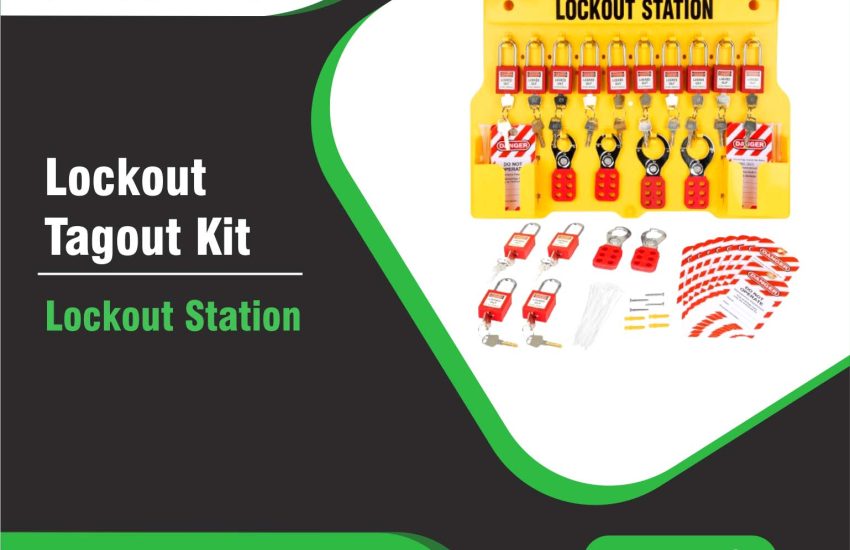A Safety Lockout Station plays a critical role in ensuring machines and equipment are safely locked out during maintenance or repair, thereby preventing accidental injuries and fatalities. Lockout/tagout (LOTO) procedures are essential in industries such as manufacturing, construction, and chemical plants, where workers operate complex machinery that poses significant risks. This article explores the importance of Safety Lockout Stations, their specifications, and how they help improve safety in the workplace.
What is a Safety Lockout Station?
A Safety Lockout Station is a designated area that stores and organizes necessary lockout/tagout equipment for easy access. The station holds locks, tags, hasps, and other devices used to secure machinery during service or maintenance. These stations are typically wall-mounted or placed in accessible locations for authorized personnel. By providing an organized system for lockout devices, the station reduces downtime, boosts operational efficiency, and ensures compliance with safety regulations.
Why is a Safety Lockout Station Important?
A Safety Lockout Station is vital for preventing workplace injuries that could occur if machinery starts up unexpectedly during maintenance. The lockout/tagout procedure involves isolating energy sources, locking them out, and tagging the equipment to warn workers that it is undergoing maintenance. Without a lockout station, workers may become confused, response times may delay, and they might fail to comply with safety standards, such as OSHA regulations.
Key benefits include:
- Reduced Risk of Accidents: By ensuring proper lockout/tagout procedures, a lockout station helps prevent the accidental release of hazardous energy.
- Organized Equipment Storage: The station ensures that all necessary lockout devices are stored in one place, saving time and effort during maintenance tasks.
- Regulatory Compliance: Correct use of lockout stations helps businesses meet OSHA and other safety regulations.
Specifications of a Safety Lockout Station
The design of a Safety Lockout Station depends on the specific needs of the workplace, but common features include:
- Material Construction:
Most stations are made from durable materials like steel, plastic, or heavy-duty PVC, which are resistant to rust, corrosion, and damage from chemicals. - Lockout Equipment Storage:
A lockout station typically includes compartments, hooks, and shelves for organizing various devices, such as:- Padlocks: Used for locking energy sources.
- Hasps: Allow multiple people to lock out equipment at the same time.
- Lockout Tags: Indicate who is working on the equipment and when it is safe to operate.
- Circuit Breaker Lockouts: For isolating electrical circuits.
- Valve Lockouts: Ensure valves remain in the off position.
- Cable Lockouts: Secure electrical or mechanical devices using cable locks.
- Size and Mounting Options:
Lockout stations come in various sizes, from compact, wall-mounted versions to larger, freestanding units with drawers and bins. Wall-mounted stations are most common in smaller work areas. - Color and Labeling:
Bright colors, such as red or yellow, are used to make the station visible. Clear labels ensure compliance with OSHA standards, making it easy for employees to quickly find and use the equipment they need. - Lockout Device Compatibility:
A good lockout station accommodates a wide range of devices, including universal lockouts, circuit breaker lockouts, and valve lockouts. Compatibility ensures the station can support multiple industries and various types of machinery. - Customizable Options:
Many stations offer customizable inserts and sections to accommodate specific tools and devices, meeting the unique needs of each workplace.
Popular Types of Safety Lockout Stations
- Wall-Mounted Lockout Stations
Wall-mounted lockout stations are easy to install and save space. These stations are ideal for workplaces with limited floor space and can store a wide variety of lockout tools and devices. - Free-Standing Lockout Stations
Larger work areas often benefit from free-standing lockout stations. These units can store more equipment and are portable, allowing them to be placed near work areas where frequent lockout/tagout procedures are needed. - Portable Lockout Stations
Portable lockout stations are designed for employees who need to carry lockout equipment to various job sites. These stations typically include a lockbox or bag that securely holds all necessary devices for transportation. - Lockout Tagout Cabinets
Lockout tagout cabinets are enclosed units designed to keep lockout devices organized, secure, and easily accessible. These are commonly used in high-security environments.
How to Choose the Right Safety Lockout Station
When selecting a Safety Lockout Station, consider the following factors:
- Workplace Size: Larger work areas may require a larger, free-standing lockout station with additional storage.
- Number of Employees: Workplaces with multiple workers performing maintenance simultaneously might need a station with multiple compartments and hasps.
- Type of Equipment: The nature of the machinery will determine which lockout devices are necessary, such as electrical, hydraulic, or pneumatic lockouts.
- Durability: Choose a lockout station made from durable materials that can withstand the demands of your work environment.
Safety Lockout Station Features to Look For
- Compliance with OSHA Standards
- Color-Coded Labels for Easy Identification
- Secure Storage for Tools and Devices
- Easy Access for Authorized Personnel
- Durable, Long-Lasting Materials
Conclusion
A Safety Lockout Station is a crucial component in maintaining a safe, compliant workplace. Storing lockout/tagout devices in an accessible, organized station helps reduce the risk of accidents and ensures that maintenance tasks are conducted safely. With various options, including wall-mounted, free-standing, and portable lockout stations, businesses can choose the best solution for their specific needs. Investing in a well-organized lockout station ensures compliance with safety regulations and contributes to a safer work environment for all employees.


